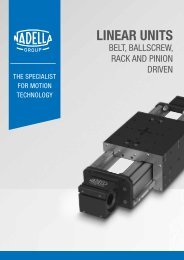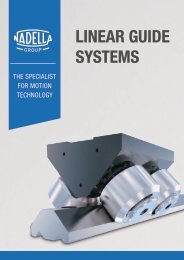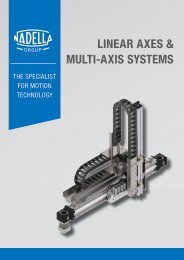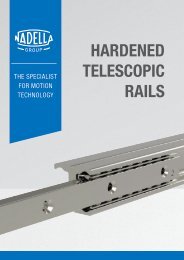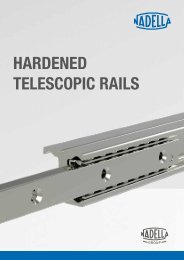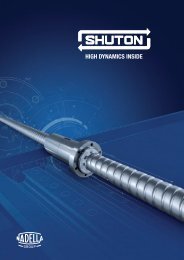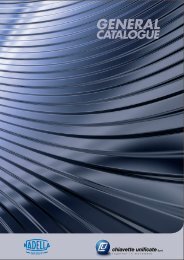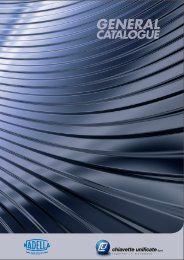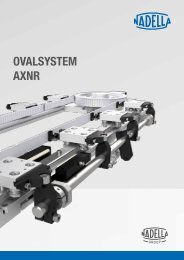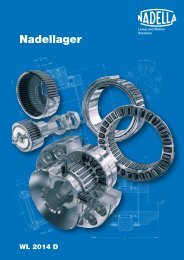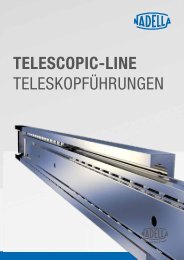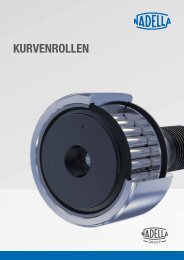Create successful ePaper yourself
Turn your PDF publications into a flip-book with our unique Google optimized e-Paper software.
TECHNICAL INFORMATION<br />
CALCULATION BASIS<br />
GENERAL<br />
All data refer to the respective standard type of the linear module. A special design or temperatures above 80 °C can considerably affect<br />
these values.<br />
TECHNICAL DATA, LOADS AND LOAD MOMENTS<br />
The values indicated are maximum possible individual sizes. Combined loads (e. g. forces and moments from different directions) reduce these<br />
maximum values and can have a negative effect on precision. If linear actuators are not fully supported, in addition a deflection or torsion test<br />
may become necessary.<br />
REPEAT ACCURACY<br />
The repeat accuracy defines that under the same conditions within the given tolerances the mechanical linear module will reach again a<br />
position already approached before.<br />
STROKE LENGTH<br />
The stroke length indicated in the order code corresponds to the maximum possible travel distance. Accelerating and stopping distances or a<br />
possible safety overflow must be taken into consideration for design.<br />
SPEEDS<br />
The theoretical travel speed results from the screw pitch or in case of a toothed belt actuator from the stroke per turn of the pinion, the gear<br />
ratio of a possible gear and a motor speed. To determine the actually possible travel speed the specific conditions, the mass to be moved,<br />
acceleration, motor output and the admissible drive torque of the selected actuator as well as the efficiency have to be considered.<br />
OPERATING CHARACTERISTICS AND PRODUCTION TOLERANCES<br />
Differences in running performance and noise development with identical units cannot be completely excluded, not even by our high production<br />
standard with small production tolerances. Our extruded profiles are manufactured according to DIN EN 12020-2. Especially with reference<br />
to straightness and torsion these fixed tolerances mostly are clearly underrun. The exact adjustment of the linear units and / or mounting<br />
to precisely machined surfaces increase the guiding accuracy. A possible deflection of partially supported actuators mainly depends on<br />
the inherent rigidity, the load, the self-supporting length and the rigidity of the adjacent construction.<br />
76 |



